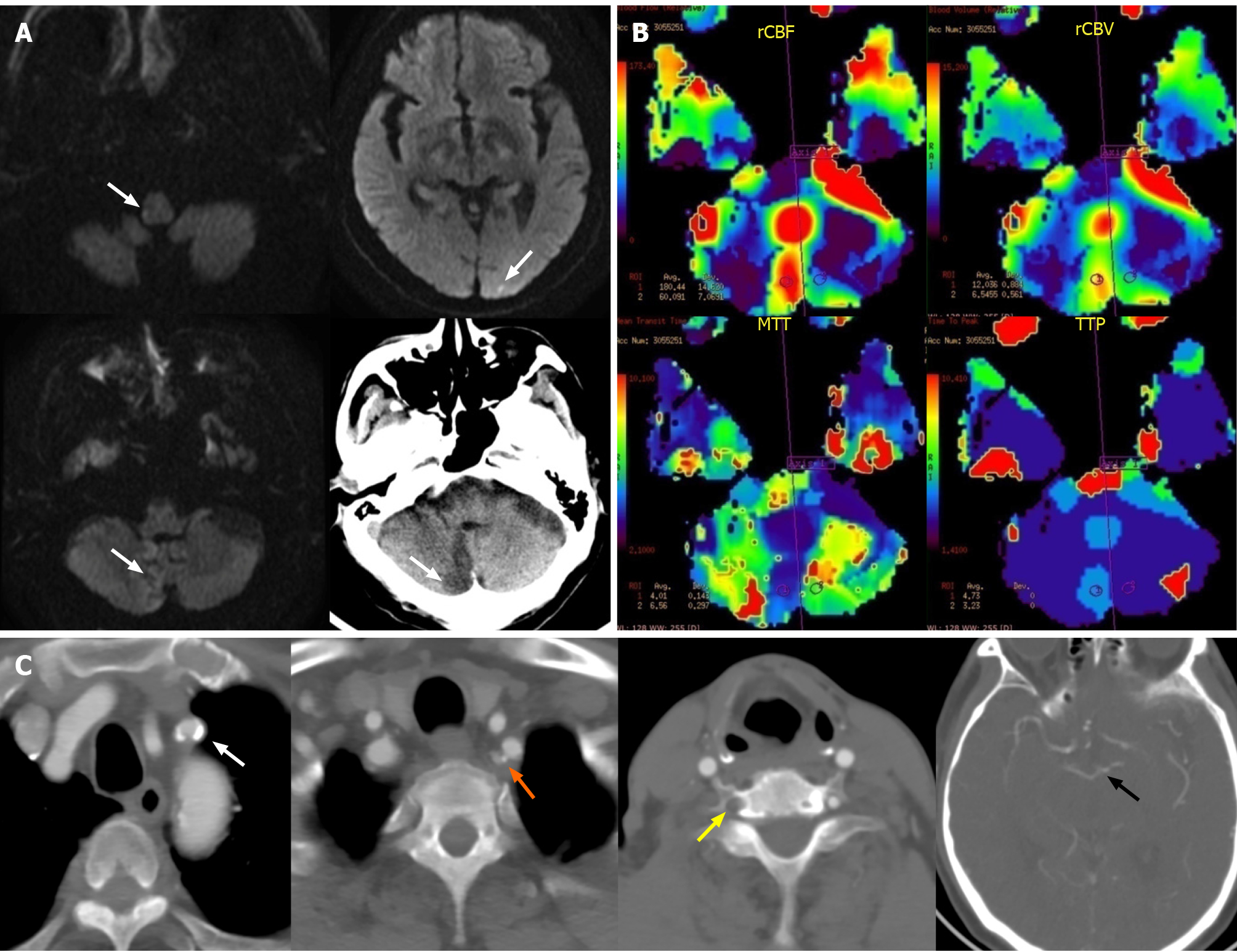Copyright
©The Author(s) 2021.
World J Clin Cases. Nov 16, 2021; 9(32): 10033-10039
Published online Nov 16, 2021. doi: 10.12998/wjcc.v9.i32.10033
Published online Nov 16, 2021. doi: 10.12998/wjcc.v9.i32.10033
Figure 1 Imaging evaluations of brain before subclavian artery stenting.
A: Magnetic resonance (MR) diffusion-weighted imaging and non-contrast computed tomography scan showed the coexistence of acute and subacute infarctions in cerebellum, medulla oblongata and occipital lobe (white arrow); B: MR-perfusion-weighted imaging showed that there was no significant difference in relative cerebral blood flow, relative cerebral blood volume, mean transit time and time to peak between bilateral cerebellar hemispheres except the infarct core; C: Computed tomography angiography showed the calcified plaques lead to the stenosis of proximal left subclavian artery (white arrow), stenosis at origin of the left vertebral artery (VA) (orange arrow), the occlusion of right VA (yellow arrow), and the bilateral posterior communicating arteries were not opening (black arrow point to the top of basilar artery).
- Citation: Zhang Y, Wang JW, Jin G, Liang B, Li X, Yang YT, Zhan QL. Focal intramural hematoma as a potential pitfall for iatrogenic aortic dissection during subclavian artery stenting: A case report. World J Clin Cases 2021; 9(32): 10033-10039
- URL: https://www.wjgnet.com/2307-8960/full/v9/i32/10033.htm
- DOI: https://dx.doi.org/10.12998/wjcc.v9.i32.10033









